Projects
Conservation of a C14th Gloucester Cathedral Cartulary
This National Manuscript Conservation Trust funded project involved the conservation of and rehousing of Register B, a C14th cartulary. The register is one of five cartularies in the Gloucester Cathedral collection, and is a companion volume to Register E, which is dated 100 years later.
Date completed : 1 February 2019 Duration : 12 Weeks
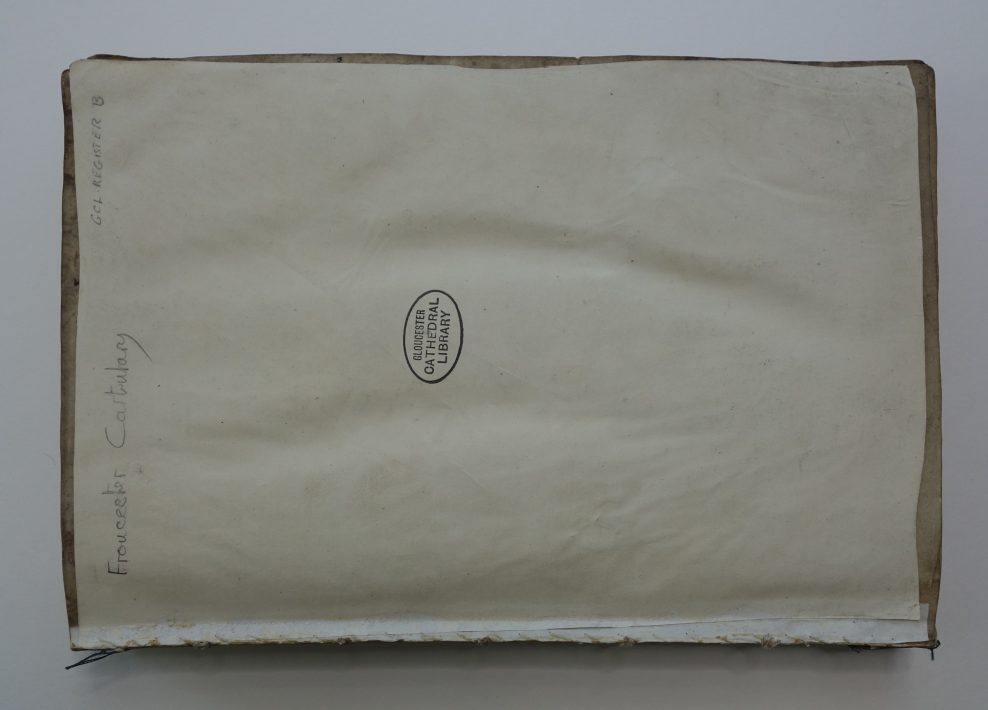
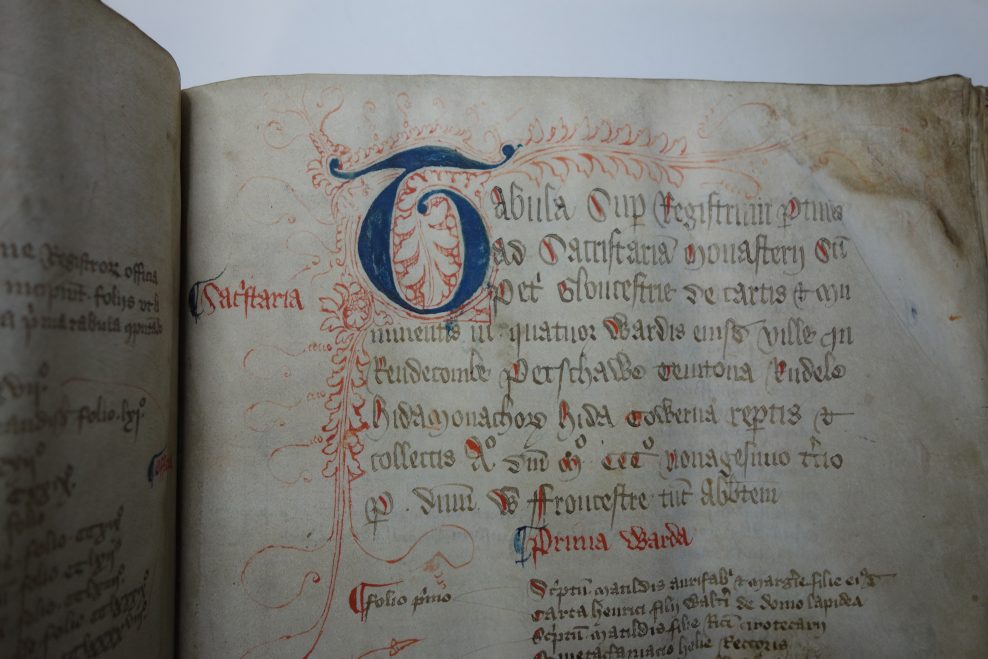
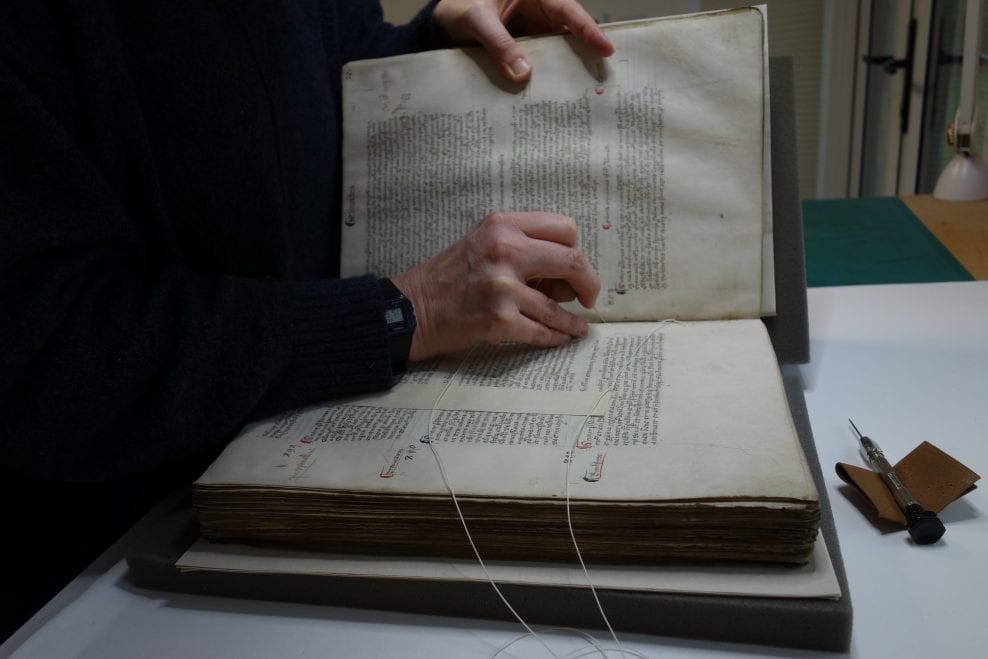
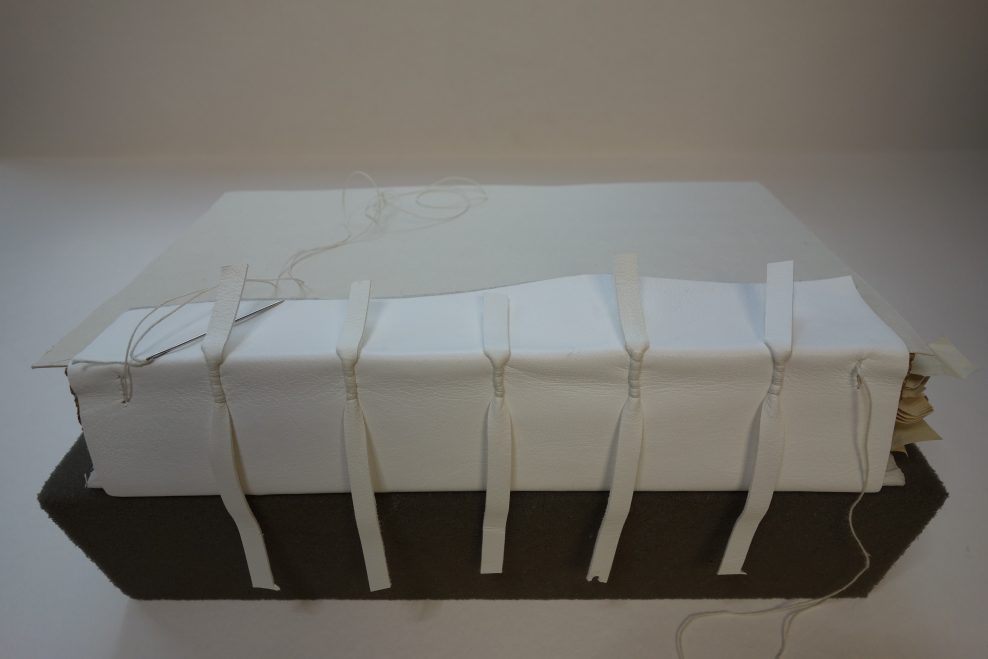
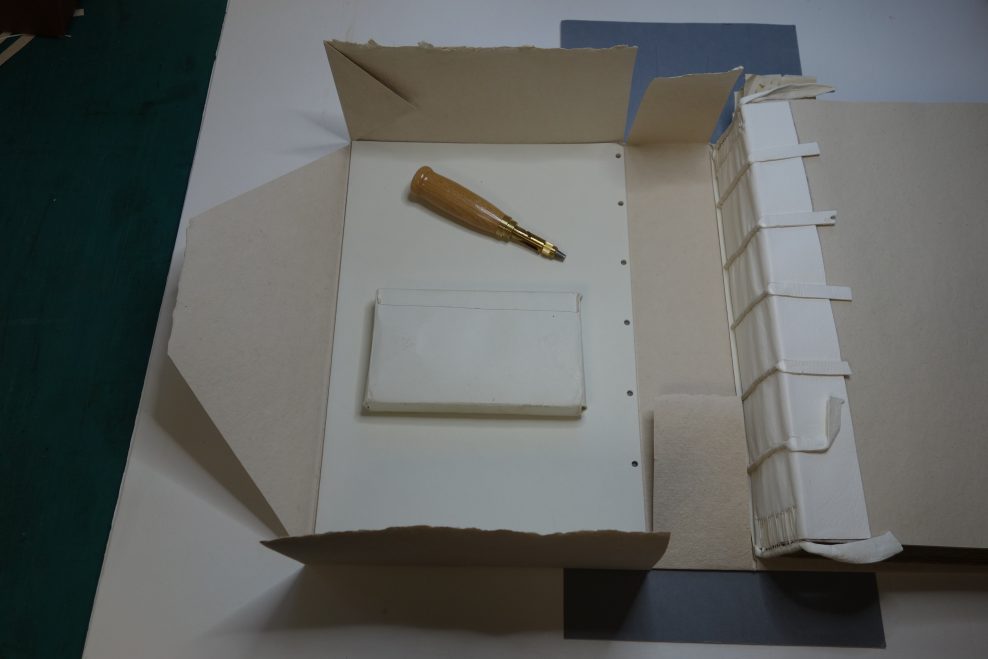
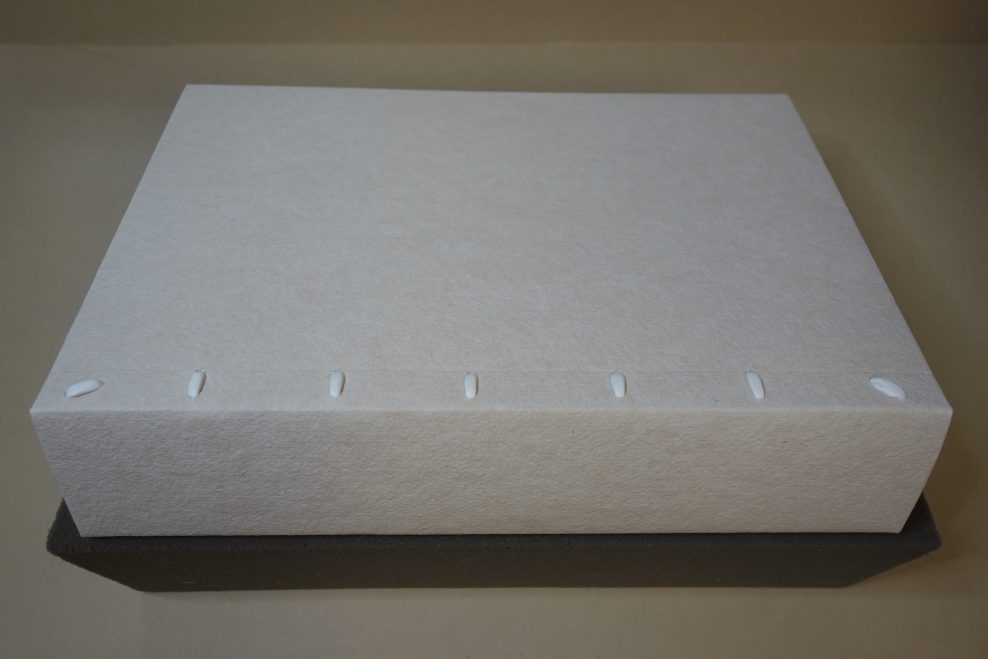
The cartulary comprised a parchment textblock, written in iron gall ink with red and blue initials and extensive pencil annotations. What made this object additionally interesting was the lack of a binding: the textblock survived with more modern paper flyleaves. It was clear that the current sewing, although sound, was not the original structure, and it is likely, looking at its companion Register E, that the manuscript had been bound at least twice with the missing binding likely to have been a nineteenth century in-boards leather-bound pastiche.
In discussion with the Cathedral Archivist, a flexible, non-adhesive binding was agreed to be the best option, using the existing non- contemporary sewing structure as a basis. This provided a flexible, durable and protective structure and cover to the manuscript, allowing full intended and supported use with good handling properties whilst not imposing a permanent, in-boards binding style. By removing the existing heavy application of adhesive from the spine, supporting the sewing using durable and flexible materials and providing a hard-wearing but supple handmade paper cover, secured only by the tension of the sewing slips rather than adhesive, the manuscript was offered the best possible protection and handling properties as well as a sympathetic and attractive aesthetic. Furthermore, the binding could be removed and replaced without any damage to the manuscript itself.
The new binding was based on the supported resewing of the existing quires through new linen and alum tawed spine linings and sewing supports. The alum tawed sewing supports formed the basis of the attachment of the new cover. Handmade paper endleaves were be constructed to protect the outer leaves of the textblock. The binding itself consisted of heavily sized flax-based cover paper, which is a very durable material with good handling properties. No adhesives were used in direct contact with the textblock during construction or as a means of attaching the binding to the textblock.
The completed binding was stored in a custom made box with a degree of pressure to ensure the highly hygroscopic parchment was controlled in storage. A short stop-motion film was created using the treatment images to show the treatment of the cartulary, allowing members of the public an insight into the material structure of this beautiful object.
My thanks to Gloucester Cathedral Library and Archives for the use of these images.

